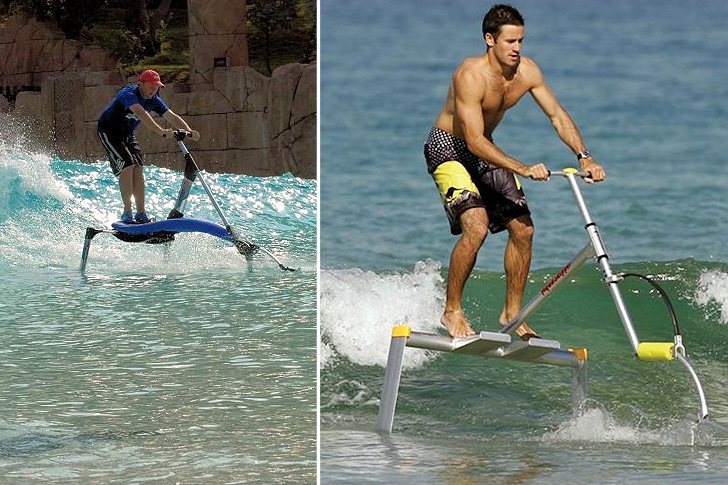Can you imagine riding waves with a human-powered hydrofoil? Although the invention is 60 years old, this small watercraft has hardly seen the light of day in the mass market.
It might sound strange, but flapping wing propulsion watercraft are the fastest water-based vehicles propelled solely by human power.
They can reach speeds of up to 34 kilometers per hour (21 miles per hour).
The Wasserläufer was a forerunner of the design developed in Germany during the 1950s - the secret lies in a light-submerged body that provides buoyancy with a reduced drag force.
They look like surf robots and generate propulsion by forcing a foil to move up and down in the water. The forward motion of the foil generates lift, as in other hydrofoils.
The human-powered aluminum and plastic hydrofoil can be launched from the shore. The only downside is that if you move too slowly, it will sink.
Several models have been developed over the decades.
"FlyingFish" (1984), "Pogofoil" (1989), "Trampofoil" (1998), "AquaSkipper" (2003), and "Pumpabike" (2004) are the most relevant products launched in the watersports market.
